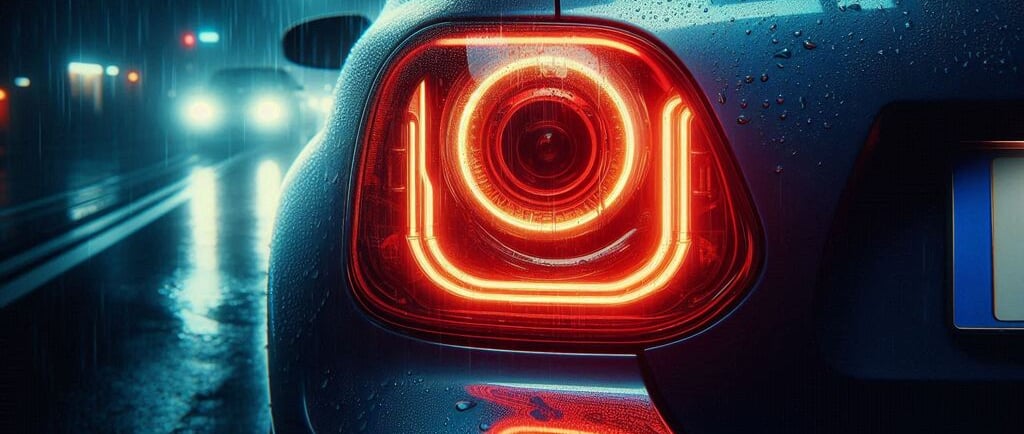Taillights: Indicates the vehicle's presence to other drivers.
When you're driving at night or in low visibility conditions, one of the most critical features of your vehicle for ensuring safety is your taillights.
LIGHTING AND ELECTRICAL PARTS
11/12/20244 min read


Taillights: Indicating Your Vehicle’s Presence to Other Drivers
When you're driving at night or in low visibility conditions, one of the most critical features of your vehicle for ensuring safety is your taillights. These often-overlooked components play a crucial role in helping other drivers spot your car from a distance, preventing accidents and ensuring smooth traffic flow. Whether you’re driving in the dark, during bad weather, or in heavy traffic, your taillights are your first line of defense in keeping your vehicle visible.
In this article, we will explore the importance of taillights, how they work, the different types available, and how to maintain them to ensure your safety on the road.
The Importance of Taillights in Road Safety
1. Visibility for Other Drivers
The primary function of taillights is to ensure that your vehicle is visible to drivers behind you. At night or in conditions where visibility is compromised, taillights alert other drivers to your presence, helping them avoid rear-end collisions. This is especially important in heavy traffic or during inclement weather such as rain, fog, or snow.
Prevent rear-end collisions: Properly functioning taillights provide a clear signal to drivers about your position on the road.
Improve road safety: Taillights contribute to overall road safety by making vehicles more visible to other drivers, pedestrians, and cyclists.
2. Clear Indication of Stopping or Slowing Down
In addition to simply making your vehicle visible, taillights also indicate when you are stopping or slowing down. This is essential for alerting drivers behind you, allowing them to react appropriately. When you apply the brakes, the taillights become brighter, signaling to drivers that you are slowing down or coming to a stop.
Did you know? According to the National Highway Traffic Safety Administration (NHTSA), more than 2 million rear-end crashes occur each year in the United States, many of which could be prevented with better vehicle visibility, including taillights.
Types of Taillights and Their Benefits
Not all taillights are created equal. Depending on the type of vehicle and your preferences, there are several options to choose from. Let’s explore the most common types:
1. Incandescent Taillights
Incandescent taillights are the traditional type, commonly found in older vehicles. These lights use a filament inside the bulb to produce light when electricity passes through it. They are affordable, but their performance can be limited compared to newer technology.
Benefits of Incandescent Taillights:
Cost-effective: These lights are affordable and easy to replace.
Warm light: They provide a soft, yellowish light that many drivers find easier on the eyes at night.
Drawbacks:
Less energy-efficient: Incandescent bulbs consume more power and have a shorter lifespan compared to modern options.
Dimming over time: As they age, incandescent taillights may lose their brightness, reducing visibility.
2. LED Taillights
LED (Light Emitting Diode) taillights are becoming the preferred choice for modern vehicles. They are brighter, more energy-efficient, and last longer than incandescent bulbs. LED taillights also offer faster response times, which can be crucial in preventing accidents.
Benefits of LED Taillights:
Long lifespan: LED bulbs last significantly longer, reducing the need for frequent replacements.
Bright, clear light: They offer a bright, crisp light that makes your vehicle stand out more clearly on the road.
Energy-efficient: LED taillights consume less power, which can improve fuel efficiency.
Drawbacks:
Higher upfront cost: LED taillights are more expensive to purchase and install initially.
3. Xenon Taillights
Xenon taillights, also known as High-Intensity Discharge (HID) lights, use a high-voltage electrical arc to create an intense, bright light. While more commonly found in headlights, some luxury vehicles also use xenon taillights.
Benefits of Xenon Taillights:
Extremely bright: Xenon lights are much brighter than other types, making them ideal for maximum visibility.
Longer lifespan: They last longer than incandescent lights.
Drawbacks:
Expensive: Xenon taillights are typically more expensive to install and replace.
Requires proper installation: Due to their high intensity, they need to be installed and aligned properly to avoid blinding other drivers.
How to Maintain Your Taillights for Optimal Performance
To ensure your taillights work efficiently and keep you safe on the road, regular maintenance is key. Here are some simple maintenance tips:
1. Check Taillight Functionality Regularly
Always check that your taillights are functioning properly. You can do this by having someone stand behind your vehicle while you press the brake pedal or turn on your headlights. If any light is dim or not working, it’s important to replace the bulb immediately.
2. Clean Your Taillights
Dirt, debris, and grime can accumulate on your taillights over time, reducing their effectiveness. Regularly clean the lenses using a mild detergent and a soft cloth to ensure maximum light output.
3. Replace Burned-Out Bulbs Promptly
If one of your taillights goes out, it’s crucial to replace the bulb as soon as possible. A non-functioning taillight not only reduces your visibility but can also lead to a traffic ticket.
4. Check for Moisture or Fogging
Moisture buildup inside the taillight housing can cause the bulbs to burn out faster and reduce the overall brightness. If you notice condensation inside the lens, it’s important to address it quickly to prevent further damage.
Conclusion: Don’t Overlook Your Taillights
In conclusion, taillights are an essential safety feature that should not be overlooked. They ensure your vehicle is visible to other drivers, signal when you’re stopping, and help prevent accidents. Whether you have incandescent, LED, or xenon taillights, it’s important to maintain them for optimal performance and safety.
Make sure to check your taillights regularly and replace any faulty bulbs as soon as possible. With the right maintenance, your taillights can continue to protect you and others on the road.



